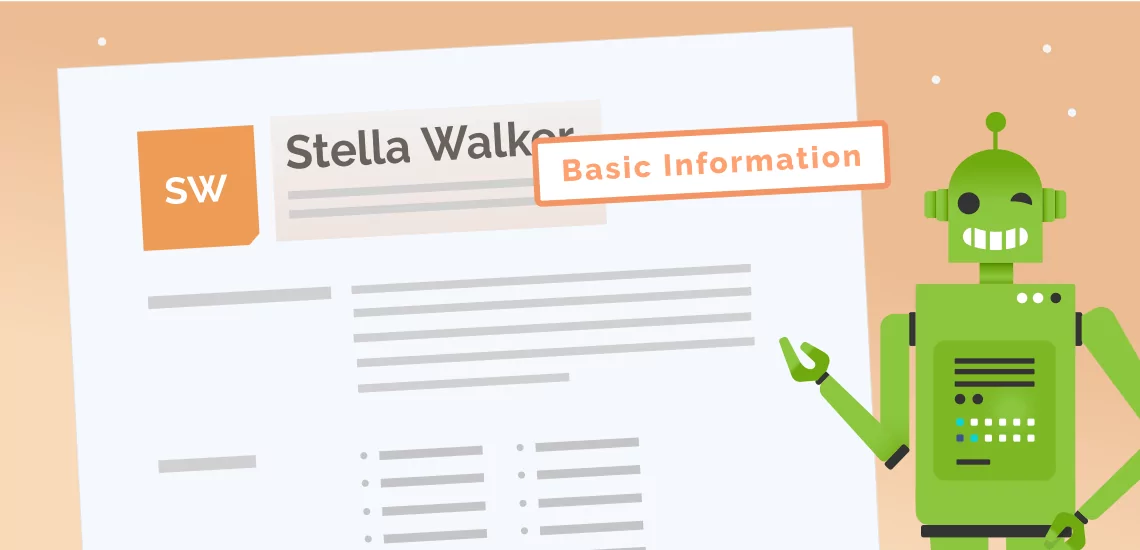Opinions vary on whether you should put your address on your resume in %currentyear%. Here are pros and cons to including your address, plus a few tips from ResumeNerd.

What to Know About Putting Your Address on Your Resume
Address on Resume
When you are applying for a new job, hiring managers need your contact information. This should be at the top of your resume. But what should this section look like? Opinions vary about whether you need to include your full street address for the hiring manager in 2022. Should you use different fonts? What about privacy concerns? Is there a risk of identity theft? Let’s look at the pros and cons, and some do’s and don’ts for this section of your resume.

Where to Put Your Address on Your Resume
If you choose to include your address, it will go on the top of your one-page resume, regardless of resume format. It’s a good idea to use a different font to make it stand out so it is immediately visible to the recruiter. Your address will go with other contact information, such as your full name, professional email address, phone number, LinkedIn profile (if available), and any other professional links you wish to include. A full mailing address looks like this: 7 Main Street Brooklyn, New York, ZIP Code However, you could opt for a shortened home address. This means just putting your city and state, like this: Brooklyn, New York Let’s examine these options further.
-
Address on Your Resume: The Pros
One potential pro to including your address on your resume is to show your location, especially if the job posting requires local candidates for the role. Therefore, showcasing that you live nearby presents you as a viable candidate for the position. However, note that you can accomplish this without giving your full address. City and state can suffice in these instances.
Secondly, hiring managers often use applicant tracking systems (ATS) to scan candidates’ resumes for keywords and other information. During the hiring process, some job postings receive many applications. Hiring managers can’t sift through them all, so they use an ATS as the first obstacle for resumes to pass. The thinking is that, if you don’t include an address in the contact section, the system may penalize you, and it may not get seen.
Address on Your Resume: The Cons
There are a few cons to consider when including your address on a professional resume for a job application. The first is space. Taking up more space to give a full mailing address on a one-page resume is not efficient, especially if you have a lot of professional experience and education you need share. In most resume examples, using the shortened address is a good idea as it only takes up one line.
Next, geographical location is not an issue for some job seekers. You may be thinking of relocating. In this case, adding your current address is sharing information that could hurt your prospects of landing the role, and for entirely misleading reasons. Note that if you’re open to relocating, you should mention this in either your resume or your cover letter.
Some people raise privacy concerns as a con for adding your full address to your resume. Many are concerned about adding comprehensive contact information, saying, “If I put my address on my resume, anybody can steal that information.”
While some privacy concerns are valid, the reality is that most of your contact details are publicly available to anyone. The employer can do basic background checks to find this out anyway.
Address on Your Resume: How To Decide
Ultimately, it’s up to you, but we advise including the shortened form of your address in your resume header alongside other contact information. This way, you won’t take up too much space while signaling to the hiring manager that you are geographically close to the job location.
FAQ: Address on Resume
Check the job description during your job search to see if your location is a relevant factor in whether you get a job offer. Generally speaking, companies are more interested in your work history, skills, and qualifications than your address, so you should be more concerned about getting those right by looking at our resume templates, resume tips, and using our resume builder. However, for some businesses, an address may still be necessary.
If you include your address, include it in all components of your application, including your cover letter. This way, the hiring manager will see it at a glance at the top of each document if they need it.
If you live very far away, you might not want to include your address due to concerns that it’s a red flag. However, even in this case, it may be a good idea to share your address with a note elsewhere (e.g., in your cover letter) that you are ready and willing to relocate.








